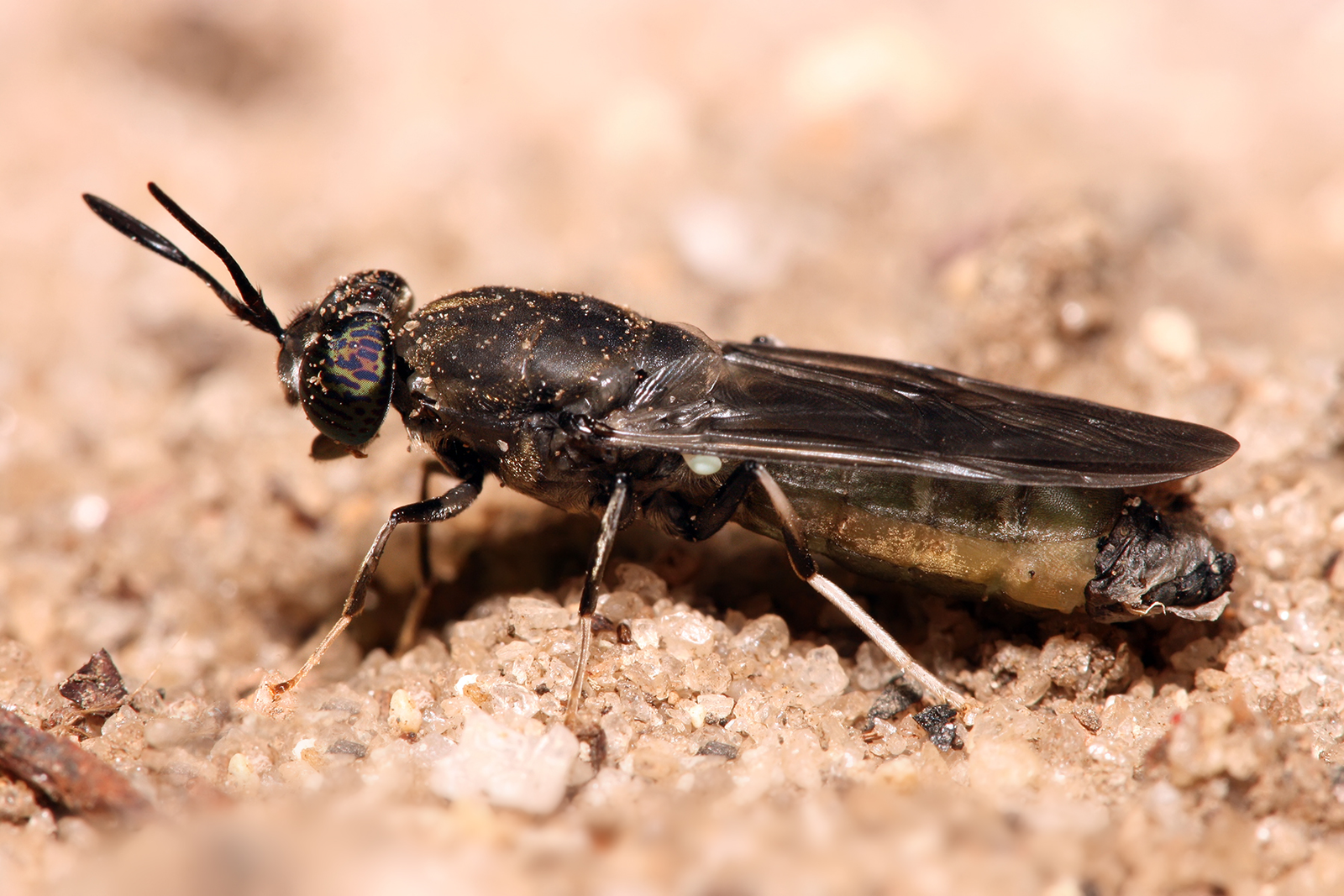Insects could replace soya in poultry feed

Looking at alternative sources of feed for livestock is still creating a “buzz” in the industry. A study carried out by a student from the Royal Agricultural University took a closer look at using insects to replace soya in poultry diets.
It’s been said that a single pair of breeding flies could produce enough offspring to cover the globe to a depth of 47ft in less than six months, given unlimited food and no mortality. On the face of it, then, insects offer a tantalising alternative to importing soya for animal feed.
They can convert waste products, such as blood, into a tasteless, protein-rich powder that can exceed the nutritional qualities of pulses in some instances. But the industry still has several barriers to cross before the average farmer could consider mixing bugs with barley, and feeding them to poultry. Tristan Bennett, a student at the Royal Agricultural University, chose to look at its feasibility for his masters project, now published.
“There is huge potential for further research and field tests to identify and experiment with the use of different insects in animal rations,” explains Mr Bennett. “When considering insects as a foodsource, the livestock’s natural feeding habits should be considered – larval and pupal forms of insects are naturally consumed by free-range poultry.”
Different insect species offer different levels of protein
A key area to consider before any chicken might be chowing down on flies is their type. Different species have differing protein levels, and the amino acid structure can also vary wildly. “A recent study identified 20 species of insect with crude protein levels similar to fish meal, and a further 28 with levels similar to soya,” says Mr Bennett.
Protein is composed of amino acids, and of primary importance are lysine, methionine and leucine. Here the potential for insects in feed rations really begins to look attractive; some insects, including the housefly, have higher methionine levels than fishmeal.
These figures are relevant as feed compounders will often add expensive nutrients to rations to make up the inclusion quality when mixing feed with soya. “Also, the chitin, found in insect exoskeletons is believed to have a positive effect on the immune system, which could reduce the number of antibiotics required in the poultry industry,” he adds.
One study found improved growth and carcass quality in chicks fed insect protein as part of their ration. A further point made is that the diet of flies can be adjusted, thereby altering nutrition.
Bringing to market
Despite the promise that insect protein offers an alternative to soya, or fishmeal, there is little in the way of a commercially scalable system to date. But the potential market is large. Around 3.5m tonnes of soya is imported into the UK each year. “This illustrates that there is huge potential demand for insect protein if it can be produced in a cost effective manner once legislative barriers have been removed,” says Mr Bennett.
He points to a scheme set up in South Africa, Agriprotein, in which two UK entrepreneurs are forging ahead with making a commercially viable model for insect protein. They are working to scale up, and currently have a facility able to produce 17t of wet larvae a day, from 110t of organic waste. It represents the closest to a commercial system to date, and the company aims to eventually licence its technology to other countries.
Source: FWI
Related articles
Insects: The missing link in pig and poultry diets?
Some insects show higher ADG than livestock
New West African project on using insects for feed
Photo Report
Photo report: Insects – From a hobby to big business
Video
Video: Dutch insect farm ready for future











